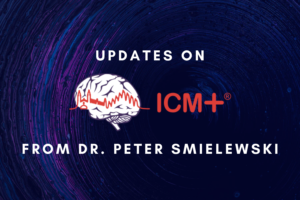The Correlate of Injury to the Nervous System (COIN) Index: A New qEEG Tool for Real-Time Stroke Detection at Bedside

Mauro Caffarelli
Every year in the United States, over 70,000 patients will have a stroke while in the hospital – half of these strokes occur in association with a vascular procedure of the heart or neck. Counterintuitively, patients with in-hospital stroke are less likely to receive time-sensitive stroke treatment than patients who have stroke outside of the hospital. It turns out patients under anesthesia or who are intubated in the ICU experience delays in stroke recognition, likely because of the challenge in obtaining a neurological exam in sedated patients. The use of quantitative EEG analysis for ischemia and stroke recognition is well described, but its broad use as a screening tool is limited by the need for expert interpretation.
For the clinician at bedside, the options for quantitative EEG stroke screening present a key frustration: the absence of meaningful diagnostic thresholds and the need for high-quality training. The COIN index is a quantitative EEG analysis technique designed to help healthcare providers recognize stroke in real-time. COIN is similar to the Alpha-Delta Power Ratio (ADR), a well described QEEG index for ischemia monitoring. Spectrographic analysis on brief windows of EEG data is used to calculate COIN, providing continuous output that is clinically interpretable by the bedside team. A continuous numeric value is trended over time, where a value of ‘0’ implies a symmetric EEG background, and values below -15 indicate the presence of a focal power suppression in the theta (4-8 Hz), alpha (8-12 Hz) and beta (12-18 Hz) ranges. A sudden drop in COIN reflects the time of stroke onset, and a topographic COIN visualizer allows easy stroke localization.
COIN may provide an intuitive turn-key solution to enable stroke screening in high-risk clinical scenarios such as Extracorporeal Membrane Oxygenation (ECMO). ECMO carries a 13% risk of both thromboembolic and hemorrhagic stroke, which is associated with adverse neurological outcomes and decreased survival. Real-time stroke recognition on ECMO would help clinicians make adjustments to blood pressure and anticoagulation management. There are even reports of mechanical thrombectomy being done during ECMO – recognizing stroke at its onset would enhance the ability to offer this life-saving therapy as early as possible.
We are excited to announce our partnership with Moberg Analytics to bring COIN to the Moberg Connect Platform. The Moberg Connect Platform will allow correlation of COIN with other physiologic monitoring modalities, allowing us to understand the dynamic link between focal ischemia and blood pressure. The use of COIN for stroke screening will be an important step in expanding the utilization of EEG in the ICU and improving outcomes in patients with in-hospital stroke.





